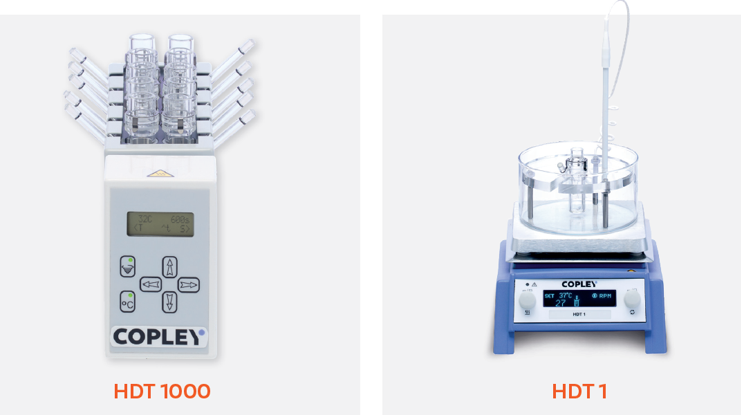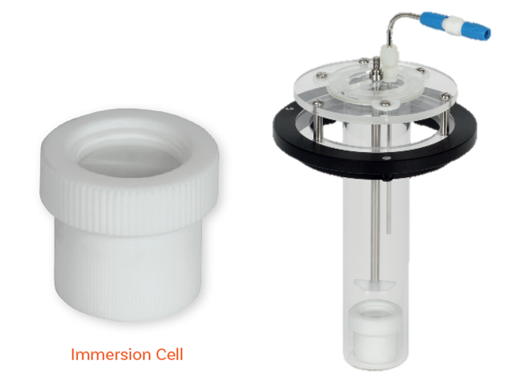Quality Assurance-Physical
Semisolids Testing
Most pharmaceutical dosage forms applied directly to the skin for topical action are classified as semisolid, a group of products which include ointments, creams and gels. They are typically applied for immediate, localised relief. These products are typically hydrocarbon-based or oil-in-water emulsions incorporating additional ingredients such as emulsifiers, stabilisers, pH buffers, preservatives, absorption promoters and perfumes.
USP Chapter <1724> details the performance testing required for semisolid drug products.
There are three different apparatuses for the in vitro determination of drug release from semisolid drug dosage forms:
- Vertical Diffusion Cell (VDC)
- Immersion Cell
- Flow Through Cell (Apparatus 4)
Due to its simplicity and reproducibility, the VDC, or Franz Cell, is typically the apparatus of choice. The VDC comprises two parts: (a) the donor chamber containing the sample to be tested and (b) the receptor chamber containing the receptor medium. The two parts are separated by an inert, highly permeable support membrane that acts as a conduit through which diffusion occurs.
The receptor chamber temperature is usually set to 32 °C, to simulate normal skin conditions. At least 6 samples should be taken over a 6-hour period and analysed using HPLC or a similar analytical technique. Results are calculated and expressed as the amount of drug released per unit membrane area (mcg/cm2) vs square root of time. This should yield a straight line. The slope of the line (regression) represents the release rate of the product.

Simple, reproducible semisolid drug release measurement
With precision heating and integrated powerful magnetic stirrers, Copley’s HDT 1 (1 single diffusion cell) and compact HDT 1000 (up to 10 diffusion cells) test system offers full control over all test parameters and has become the benchmark vertical diffusion cell test system for many labs.
Using an innovative heating block approach, the HDT 1000 eradicates the difficulties and the “spaghetti” of tubing associated with water-jacketed cell systems and accommodates either endpoint, discrete manual or fully automatic sampling techniques. A dedicated stirrer mounted beneath each station ensures thorough mixing throughout testing for accurate sampling.
HDT 1000: Key Features
- Control is provided via a user-friendly membrane keypad with test parameters displayed clearly on a backlit.
- LCD screen.
- Up to 10 cells accommodated pertest run.
- Easy to access sampling ports.
- Insulation to help maintain temperature stability.
- Heating block eradicates use of water-jacketed cells.
- Small unit footprint saves previous benchtop space.

An alternative to the Vertical Diffusion or Franz Cell for testing semisolids, the Immersion Cell (USP Model A) is described with the conventional USP Apparatus 2 for Dissolution testing.
Accommodating a 25 mm diameter membrane, the Immersion Cell is comprised of 4 main parts:
- A retaining ring to secure the membrane to the cell body
- A washer to hold the membrane in contact with the sample
- The membrane or skin
- The cell body which contains the compartment in which the sample to be tested is placed
The immersion cell us used with a special flat-bottomed version of the 200 mL Small Volume Conversion Kit to eradicate the issue of dead space under the cell that would occur with a round bottomed vessel.

